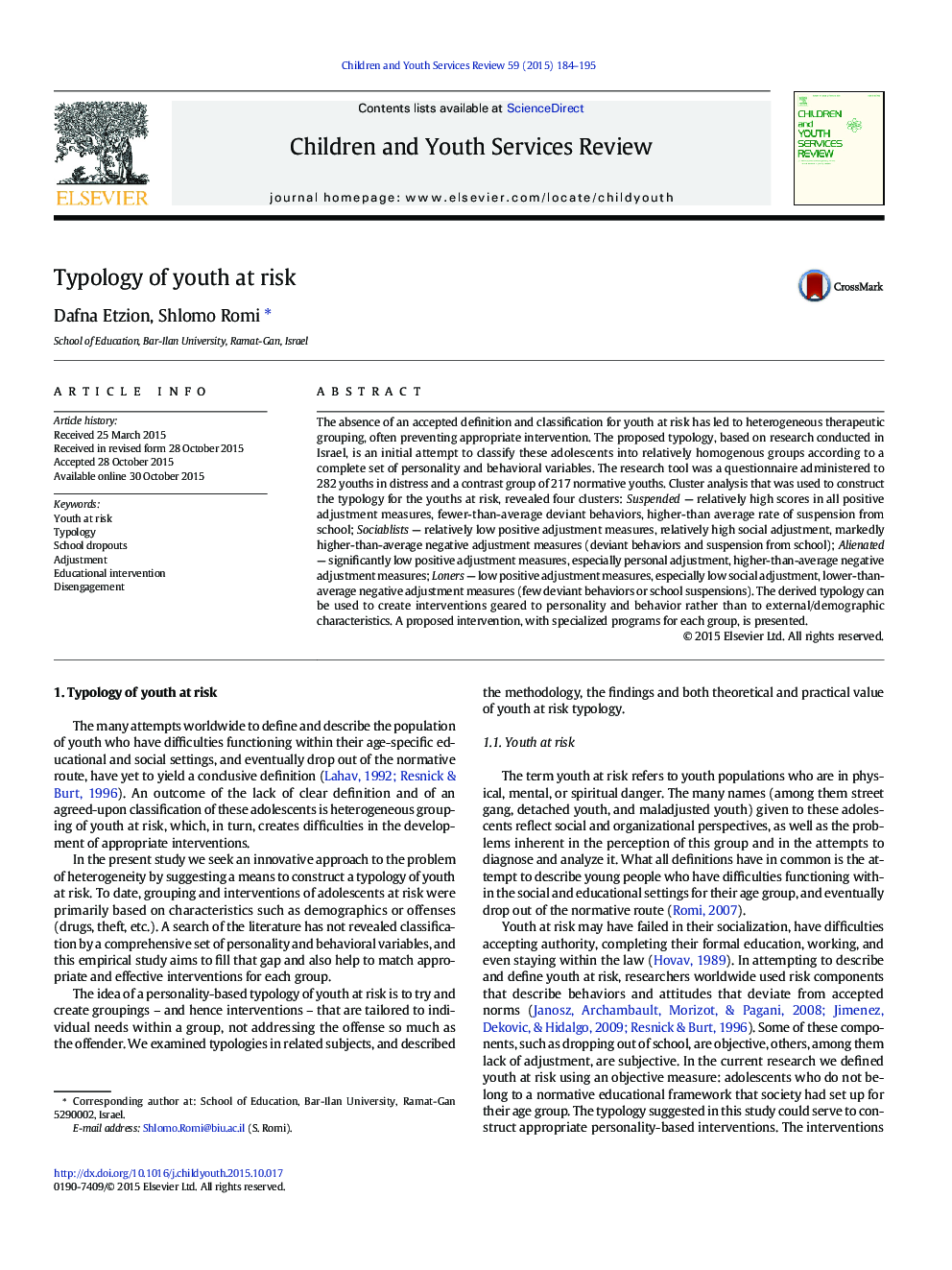| Article ID | Journal | Published Year | Pages | File Type |
|---|---|---|---|---|
| 6833914 | Children and Youth Services Review | 2015 | 12 Pages |
Abstract
The absence of an accepted definition and classification for youth at risk has led to heterogeneous therapeutic grouping, often preventing appropriate intervention. The proposed typology, based on research conducted in Israel, is an initial attempt to classify these adolescents into relatively homogenous groups according to a complete set of personality and behavioral variables. The research tool was a questionnaire administered to 282 youths in distress and a contrast group of 217 normative youths. Cluster analysis that was used to construct the typology for the youths at risk, revealed four clusters: Suspended - relatively high scores in all positive adjustment measures, fewer-than-average deviant behaviors, higher-than average rate of suspension from school; Sociablists - relatively low positive adjustment measures, relatively high social adjustment, markedly higher-than-average negative adjustment measures (deviant behaviors and suspension from school); Alienated - significantly low positive adjustment measures, especially personal adjustment, higher-than-average negative adjustment measures; Loners - low positive adjustment measures, especially low social adjustment, lower-than-average negative adjustment measures (few deviant behaviors or school suspensions). The derived typology can be used to create interventions geared to personality and behavior rather than to external/demographic characteristics. A proposed intervention, with specialized programs for each group, is presented.
Related Topics
Health Sciences
Medicine and Dentistry
Perinatology, Pediatrics and Child Health
Authors
Dafna Etzion, Shlomo Romi,
